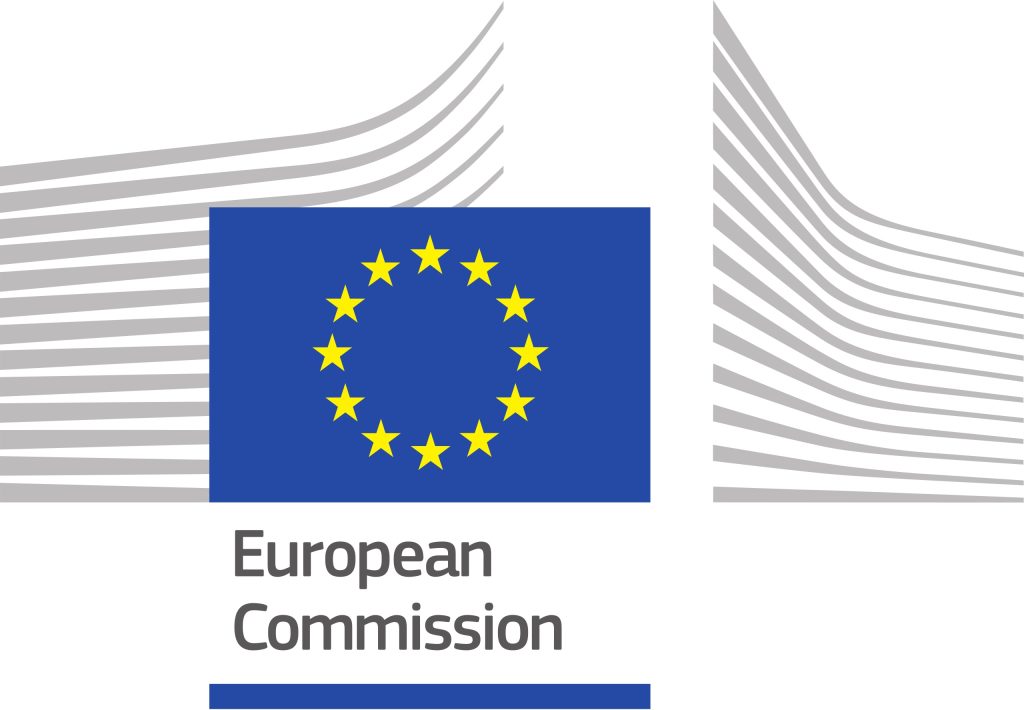
Guidelines for sustainable-by-design systems across the hydrogen value chain
Expected Outcome:
Safety and sustainability of FCH systems[1] are key requirements in the path towards a hydrogen economy, with important effects on strategic sectors. FCH systems enable considerable amounts of low-carbon energy sources to be integrated into the industrial, transport, and residential energy supply, which are the hardest sectors to decarbonise. In this regard, it is essential that the design, manufacture, operation, scale-up, maintenance, and end-of-life management of FCH systems strive to minimise negative impacts to human health and the environment, while enhancing the safety and economic and social performance of FCH technologies. This can be achieved by taking into account principles such as safety, circularity, raw materials criticality, and sustainability in the FCH systems design phase. This is in line with EU strategies and activities such as the EU Green Deal, the EU taxonomy, on sustainable products or the Safe and sustainable by design chemicals and materials framework to name but a few. In this regard, the design of FCH systems from a safe and sustainable perspective has become a crucial need.
Life Cycle Assessment (LCA) and Life Cycle Sustainability Assessment (LCSA) methodologies as well as guidelines for the eco-design of FCH systems have already been developed within the scope of previous JU-funded projects (e.g. eGHOST, FC-HyGuide, BEST4Hy, HyTechCycling, SH2E. However, it is essential to have a larger number of design guidelines for FCH systems that comprehensively address all sustainability aspects (i.e. not only the environment) and encompasses also safety aspects. In this regard, safe and sustainable-by-design (SSbD) guidelines are crucial in enhancing the performances of FCH systems throughout their life cycle, including the entire supply chain and the end-of-life. These SSbD guidelines should extend the eco-design guidelines by considering aspects such as minimising the use of critical raw materials, implementing green supply management[2] principles, enhancing the circularity of the materials used while guaranteeing the safety of the processes, chemicals and materials. Furthermore, they should also incorporate social and economic considerations .
Project results are expected to contribute to all the following expected outcomes:
- Contributing to the promotion of safe and sustainability in the design and development of FCH systems, considering also the aspects of circularity and material criticality;
- Contributing to the sustainability of the EU hydrogen strategy by including life cycle thinking approaches addressing the three dimensions of sustainability: economic, social, and environmental across the hydrogen value chain;
- Contributing to the EU strategy of safety design since safety is an inherent element of both environmental (pollution) and social (health) aspects of sustainability, and it has an economic component as well;
- Fostering the development of environmentally sustainable and socially-responsible strategies for supporting industries involved in FCH design and manufacturing;
- Contributing to the positioning of FCH products and technologies in the EU taxonomy, EU Green Deal, Eco-design Directive, and 'safe and sustainable by design' (SSbD) framework;
- Increasing the number of available safe and sustainable-by-design guidelines for FCH systems across the hydrogen value chain;
- Contributing to the development of safe and sustainability-oriented design of FCH system across the hydrogen value chain.
Project results are expected to contribute to all of the following objectives of the Clean Hydrogen JU SRIA:
- Develop life cycle thinking tools addressing the three dimensions of sustainable development: economic, social, and environmental;
- Develop eco-design guidelines and eco-efficient processes.
Moreover, the topic will impact all objectives related to all FCH systems costs because of the important impact of safe and eco-design on the economic performances (use of raw materials, production processes, certifications, etc.).
Finally, guidelines have to be developed considering the KPIs on recycling processes as defined in the JU SRIA.
Scope:
This topic addresses the development of sustainable-by-design guidelines, including reference criteria and prioritisation of actions, for a selection of FCH systems in the joint field of safe and sustainability assessment and eco-design. These guidelines should comprehensively address both the sustainability and safety aspects of systems pertaining to the primary applications of hydrogen and fuel cell technologies.
The project should encompass the following items:
- Development of at least three safe and sustainable-by-design guidelines for systems across the hydrogen value chain providing criteria for the system selected. It is expected that the systems will be selected covering different TRLs levels and different application from hydrogen production, storage, transport, distribution and utilisation;
- Integrate the sustainability guidelines developed by eGHOST project with safety aspects so to obtain SSbD guidelines of at least five FCH systems (2 from eGHOST project + at least 3 from this call);
- Providing guidance, in the guidelines, concerning the following concepts: improvement of energetic and environmental performances, reduction of critical raw materials utilisation, avoiding or minimising the use of virgin critical raw materials, green supply management, and integration of end-of-life management in order to facilitate recovery, reuse, recycle, disassembly and dismantling, following a circular economy approach;
- Integration of safety, economic and social assessments and improvements for FCH systems to achieve comprehensive SSbD guidelines. These aspects need to be integrated with the existing eco-design approaches, which primarily focus on environmental impacts, in order to create a holistic approach to sustainability and safety;
- Incorporation of various methods (e.g., Life Cycle Sustainability Assessment, circularity assessment, material criticality assessment, optimisation techniques) in the development of the guidelines and their application to the selected systems. The guidelines should encompass the following steps at a minimum: defining and evaluating a reference system, generating eco-design ideas, multi-criteria prioritisation of SSbD, defining safe and sustainable-by-design system concepts and evaluating their impact on the different stakeholders of the hydrogen value chain (e.g., industry, research organisations, academia, policy makers). Social Sciences and Humanities (SSH) methods should be used to engage Stakeholders using structured surveys or interviews.
The project should provide the datasets (life cycle inventories) of the FCH systems analysed into the upcoming “hydrogen node” of the Life Cycle Data Network (LCDN).
Proposals are expected to involve experts in hydrogen technologies, safety and eco-design (e.g. research centres, universities) as well as industries and technology developers.
For additional elements applicable to all topics please refer to section 2.2.3.2.
The JU estimates that an EU contribution of maximum EUR 1.50 million would allow these outcomes to be addressed appropriately.
The conditions related to this topic are provided in the chapter 2.2.3.2 of the Clean Hydrogen JU 2024 Annual Work Plan and in the General Annexes to the Horizon Europe Work Programme 2023–2024 which apply mutatis mutandis.
[1]FCH systems are understood to mean products, components thereof or processes, related to or containing one or more FCH technologies.
[2]Green Management (GM) is the integration of environmental thinking into Supply Chain Management, including sustainable product design, low-carbon material sourcing and selection, green manufacturing processes, short-route delivery of the final products as well as end-of-life management and reverse logistics of the products at the end of their lifespan.
General Information
Safety and sustainability of FCH systems[1] are key requirements in the path towards a hydrogen economy, with important effects on strategic sectors. FCH systems enable considerable amounts of low-carbon energy sources to be integrated into the industrial, transport, and residential energy supply, which are the hardest sectors to decarbonise. In this regard, it is essential that the design, manufacture, operation, scale-up, maintenance, and end-of-life management of FCH systems strive to minimise negative impacts to human health and the environment, while enhancing the safety and economic and social performance of FCH technologies. This can be achieved by taking into account principles such as safety, circularity, raw materials criticality, and sustainability in the FCH systems design phase. This is in line with EU strategies and activities such as the EU Green Deal, the EU taxonomy, on sustainable products or the Safe and sustainable by design chemicals and materials framework to name but a few. In this regard, the design of FCH systems from a safe and sustainable perspective has become a crucial need.
Life Cycle Assessment (LCA) and Life Cycle Sustainability Assessment (LCSA) methodologies as well as guidelines for the eco-design of FCH systems have already been developed within the scope of previous JU-funded projects (e.g. eGHOST, FC-HyGuide, BEST4Hy, HyTechCycling, SH2E. However, it is essential to have a larger number of design guidelines for FCH systems that comprehensively address all sustainability aspects (i.e. not only the environment) and encompasses also safety aspects. In this regard, safe and sustainable-by-design (SSbD) guidelines are crucial in enhancing the performances of FCH systems throughout their life cycle, including the entire supply chain and the end-of-life. These SSbD guidelines should extend the eco-design guidelines by considering aspects such as minimising the use of critical raw materials, implementing green supply management[2] principles, enhancing the circularity of the materials used while guaranteeing the safety of the processes, chemicals and materials. Furthermore, they should also incorporate social and economic considerations .
Project results are expected to contribute to all the following expected outcomes:
- Contributing to the promotion of safe and sustainability in the design and development of FCH systems, considering also the aspects of circularity and material criticality;
- Contributing to the sustainability of the EU hydrogen strategy by including life cycle thinking approaches addressing the three dimensions of sustainability: economic, social, and environmental across the hydrogen value chain;
- Contributing to the EU strategy of safety design since safety is an inherent element of both environmental (pollution) and social (health) aspects of sustainability, and it has an economic component as well;
- Fostering the development of environmentally sustainable and socially-responsible strategies for supporting industries involved in FCH design and manufacturing;
- Contributing to the positioning of FCH products and technologies in the EU taxonomy, EU Green Deal, Eco-design Directive, and 'safe and sustainable by design' (SSbD) framework;
- Increasing the number of available safe and sustainable-by-design guidelines for FCH systems across the hydrogen value chain;
- Contributing to the development of safe and sustainability-oriented design of FCH system across the hydrogen value chain.
Project results are expected to contribute to all of the following objectives of the Clean Hydrogen JU SRIA:
- Develop life cycle thinking tools addressing the three dimensions of sustainable development: economic, social, and environmental;
- Develop eco-design guidelines and eco-efficient processes.
Moreover, the topic will impact all objectives related to all FCH systems costs because of the important impact of safe and eco-design on the economic performances (use of raw materials, production processes, certifications, etc.).
Finally, guidelines have to be developed considering the KPIs on recycling processes as defined in the JU SRIA.






Guidelines for sustainable-by-design systems across the hydrogen value chain 0 reviews
Login to Write Your ReviewThere are no reviews yet.